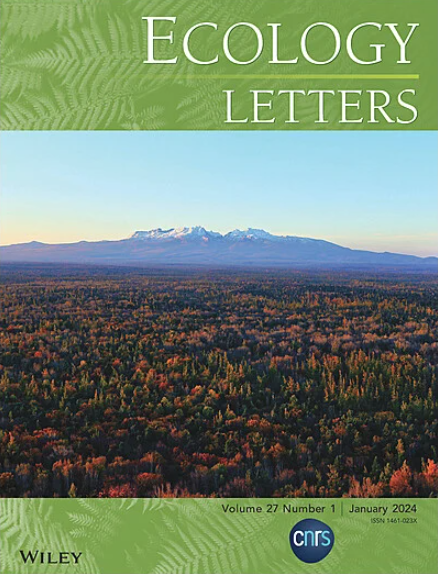受人类干扰威胁的岛屿物种-区域关系的近期快速集合
IF 7.9
1区 环境科学与生态学
Q1 ECOLOGY
引用次数: 0
摘要
岛屿物种-面积关系(ISAR)描述了更大的岛屿如何支持更多的物种。孤立的海洋群岛的isar,经过数百万年的积累,通常表现出正相关关系、陡峭的坡度和物种丰富度平衡。然而,目前尚不清楚这些特征出现的速度有多快。我们编制了79个冰期后高山湖泊的鱼类群落数据集,并报告了一个ISAR,该ISAR在不到15,000年的时间内重新形成,部分反映了较旧的系统,但具有渐近形状。移民和物种形成是主要的ISAR驱动因素,分别与面积和深度有关。移民随着面积的增加而增加,而更深的深度则促进了物种的形成,这可能是由于源库中的物种枯竭和物种形成的生态限制。这个年轻的ISAR已经被人类活动重塑,物种的引入消除了它的渐近形状。研究表明,岛屿生境形成后,isar可以迅速发展,为生物多样性聚集模式的研究提供了新的思路。本文章由计算机程序翻译,如有差异,请以英文原文为准。
Recent and Rapid Assembly of an Island Species–Area Relationship Threatened by Human Disturbance
The island species–area relationship (ISAR) describes how larger islands support more species. ISARs of isolated oceanic archipelagos, assembled over millions of years, typically show positive relationships, steep slopes, and species richness equilibrium. However, it remains unclear how quickly such characteristics emerge. We compiled a dataset for fish communities of 79 postglacial peri‐Alpine lakes and report an ISAR, formed de novo in less than 15,000 years, that partially mirrors older systems, but has an asymptotic shape. Immigration and speciation, the main ISAR drivers, are primarily associated with area and depth, respectively. Immigration increases with area, while speciation is promoted by greater depth, likely due to species depletion in the source pool and ecological constraints on speciation. This young ISAR has been reshaped by anthropogenic activities, with species introductions erasing its asymptotic shape. We demonstrate that ISARs can develop rapidly after insular habitat formation, offering insights into patterns of biodiversity assembly.
求助全文
通过发布文献求助,成功后即可免费获取论文全文。
去求助
来源期刊

Ecology Letters
环境科学-生态学
CiteScore
17.60
自引率
3.40%
发文量
201
审稿时长
1.8 months
期刊介绍:
Ecology Letters serves as a platform for the rapid publication of innovative research in ecology. It considers manuscripts across all taxa, biomes, and geographic regions, prioritizing papers that investigate clearly stated hypotheses. The journal publishes concise papers of high originality and general interest, contributing to new developments in ecology. Purely descriptive papers and those that only confirm or extend previous results are discouraged.
 求助内容:
求助内容: 应助结果提醒方式:
应助结果提醒方式:


